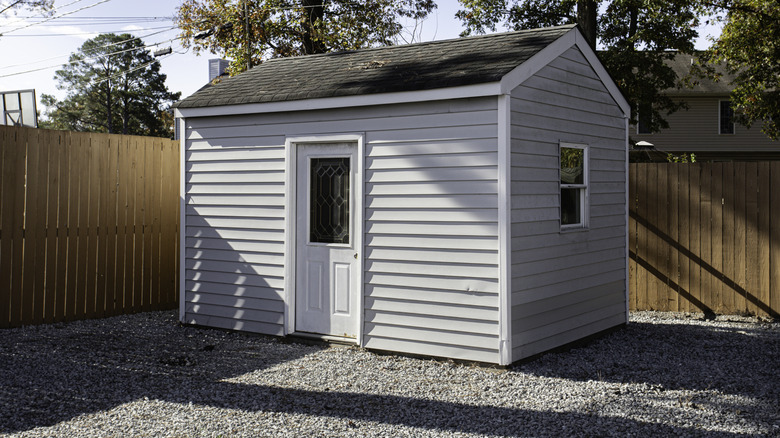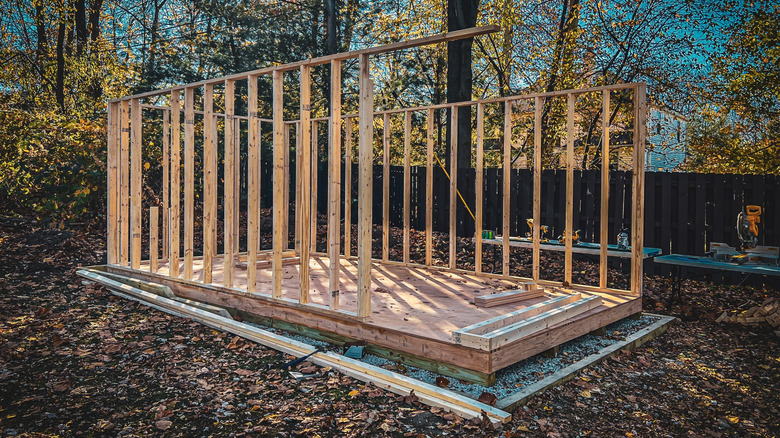The Best Type Of Gravel To Use For Your Outdoor Shed Foundation
If you are thinking about putting a small shed in your backyard, it's important to ensure that you set it up on a good base and not just directly on soil or grass so that it avoids getting damaged by water. There are a multitude of base options to choose from, including options that use concrete or even metal for foundation material, but gravel is the overall best pick. And it's a bit confusing-sounding, but what you'll actually want to get is ¾-inch clean crushed stone, not real gravel.
Clean crushed stone has larger, more irregular edges than gravel's typically much smaller size and smoother feel. This stone comes in at a low price point compared to other options — roughly $30 to $60 per cubic yard — and is also super DIY-friendly, making it the perfect option for DIY weekend warriors looking to get their shed set up quick.
If you don't use a shed base and opt to set your shed directly on whatever land type is in your backyard instead, you're setting yourself up for failure. Putting a shed's wooden frame directly atop the ground without a barrier in between all but guarantees you'll be dealing with moisture damage. Bases also ensure the shed is set on even ground and that it won't shift or settle over time. There's a lot to know before building a shed foundation, but choosing to have one is a great place to start.
Why is clean crushed stone better than other types of gravel?
This size of clean crushed stone truly offers many great perks compared to regular gravel or concrete. The larger size supports quality water drainage and avoids pooling. If water can't reach your shed, it can't creep into the flooring or beams and cause any damage there. Clean crushed stone even reduces splashback onto the shed.
Having this correctly-sized gravel also ensures great airflow. This helps mitigate water issues by helping the rocks and bottom of your shed dry faster and, in turn, be less prone to mold, rot, and rust.
Lastly, clean crushed stone is a more reliable support base choice, especially for larger loads, because its jagged edges allow the pieces to easily lock into place firmly against one another and stay set. This evenly distributes a shed's weight, thus ensuring that beams, doors, and windows stay properly aligned. If you're wanting to go with a bigger shed size than the standard storage shed, or maybe you're even considering adding an accessory dwelling unit to your backyard, you'll want to ensure that your shed foundation is capable of keeping everything locked and steady.

